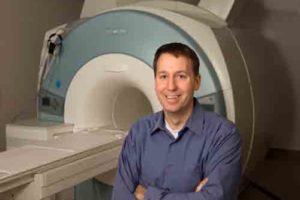mammography
Higher volume reduces false positives in screening mammography
OAK BROOK, Ill. — Radiologists who interpret a high volume of mammograms may not detect more cancers but are better at determining which suspicious lesions are not malignant, according to a new study published online and in the April print edition…
Time to raise how many mammograms radiologists must read?
Radiologists who interpret more mammograms and spend some time reading diagnostic mammograms do better at determining which suspicious breast lesions are cancer, according to a new report published online on February 22 and in print in the Apr…
Breast cancer screening with MRI benefits women with radiation therapy history
OAK BROOK, Ill. — Breast cancer screening with MRI can detect invasive cancers missed on mammography in women who’ve undergone chest irradiation for other diseases, according to a new study published online and in the April print edition of Radiol…
Annual breast cancer screening beginning at age 40 reduces mastectomy risk
CHICAGO — Having a yearly mammogram greatly reduces the risk of mastectomy following breast cancer in women between the ages of 40 and 50, according to a study presented today at the annual meeting of the Radiological Society of North America (RSN…
Colorectal cancer screening can be expanded by offering it during mammography visits
Offering colorectal cancer screening to poor minority women during mammography visits can effectively expand screening in this otherwise underserved population, although lack of medical insurance remains a significant barrier. That is the conclusion…
Gambling on breast scans
A mathematical tool known as a Monte Carlo analysis could help improve the way X-rays are used for mammography and reduce the number of breast cancers missed by the technique as well as avoiding false positives, according to research published this …
Sonogram may be better than mamogram for detecting certain breast cancers
Results of a new study show that breast sonography is more accurate than mammography in symptomatic women 45 years old or younger, and may be an appropriate initial imaging test in investigating these women, says Nehmat Houssami, MD, PhD, and lead author of the study. The study, published in the April 2003 issue of the American Journal of Roentgenology, “is the first published study to examine the comparative sensitivity and specificity of mammography and sonography in relation to age in young women with breast symptoms, where the two tests were interpreted independently of each other and where almost all subjects had undergone both tests,” says Dr. Houssami.

